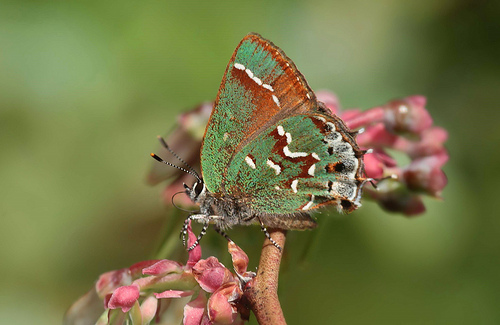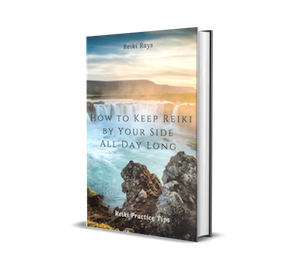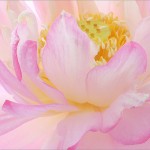Article by Phillip Hawkins
In Reiki terms we talk a great deal about healing; the process of healing and in particular the healing of oneself, but what exactly is healing? The definition of healing is literally ‘to make whole’, through the restoration of health to an unbalanced, diseased or damaged organism.
In medical terms with physical damage or disease suffered by an organism be it a single cell or a larger body of cells collectively known as the human body, healing involves the repair of living tissue, organs and the biological system as a whole and resumption of normal functioning. It is the process by which the cells in the body regenerate and repair to reduce the size of a damaged or necrotic area and replace it with new living tissue. The replacement can happen in two ways: by regeneration in which the necrotic cells are replaced by new cells that form similar tissue as was originally there; or by repair in which injured tissue is replaced with scar tissue. Most organs will heal using a mixture of both mechanisms. The brain is the only organ that can’t renew damaged brain cells in this way however there is evidence to show that in certain circumstances the brain has the ability and capacity to compensate for the damage with unaffected areas of the brain multi tasking and taking over the functions of the part of the brain that has been damaged.

Image by tpsdave
In psychiatry and psychology, healing is the process by which neuroses and psychoses are resolved to the degree that the client is able to lead a normal or fulfilling existence without being overwhelmed by psychopathological phenomena. This process may involve psychotherapy, pharmaceutical treatment and increasingly traditional spiritual approaches. So if we accept the above definition then we must approach healing from a desire to make whole, to bring together, to make complete through a process of unification and not as we sometimes do with a mindset that requires intervention from us in order to take something away. We want the illness and disease to be taken away so that the person can be made whole again but just taking away the symptom or the obvious effect won’t automatically make something or someone whole again, and in doing so we may become a part of the persons underlying problem. Something more substantial is required if healing is to be successful and sustained.
Pain is the most obvious example, and human nature being what it is when we experience pain we automatically want it to stop of its own accord, or be taken away through the intervention of some form of pain relief, be it physical mental or emotional. Pain is a symptom felt by the individual and as such is subjective to the person who is experiencing it for we all have different pain thresholds and this is why doctors will ask the patient to ‘rate their pain’ on a scale of one to ten. How that pain manifests itself may then be described as a sign or symptom that can be observed by others.
To understand what healing is we need to get a better understanding of the relationship between cause and effect. In the above example we can say that the pain is the cause and the sign or symptom is the effect, however if we develop this analogy further we can then see that there must be an underlying cause to which the physical mental and emotional pain is the effect that we experience. Pain is a part of the body’s natural defense mechanism that tells us when something is wrong and that we need to take some form of corrective action, unfortunately if we remove the symptom without understanding its cause we will create a dangerous and false sense of security in the mistaken belief that Reiki has worked and the problem, whatever it was has gone away. If we use the analogy of pain as an alarm system installed to protect a home from unwanted intrusion when the alarm is triggered the intruder has already gained a foothold and has reached a critical point where immediate action is required to neutralise the impending threat. If however the alarm system has been immobilised then awareness and personal vigilance becomes the only viable option to ensure our continuing safety. An ounce of prevention is worth a ton of cure as it’s always easier to get it right in the first place than to put it right when things begin to go wrong.
Another misconception is that pain is the first sign of something being wrong but in reality pain is in many ways penultimate to the emergence of the illness or disease and long before we become aware of the pain other less intrusive symptoms will have been trying to get our attention and to take corrective measures. From our bodies point of view pain is the last resort, a red letter final demand when all other forms of communication has failed.

Image by DrPhotoMoto
In a time not so long ago when we were less educated we believed that illnesses and diseases were the result of curses, punishment from the various Gods in vogue at the time, or the work of invisible forces in the guise of evil spirits. The enlightenment that gave birth to medical science and with it knowledge and understanding which is the basis of all healing, came the realisation that invisible forces in the form of harmful bacteria and viruses were responsible for all manner of infectious illnesses and diseases which over time have been eradicated from many parts of the world. However they say that no good deed goes unpunished and progress comes at a high price bringing with it its own set of ailments, illnesses and diseases. Where once we had infectious diseases as a result of poor sanitation, poor living standards, poor education and personal hygiene, we now have deaths of epidemic proportions caused not by some invisible malignant force but by ignorance and poor lifestyle choices. Many forms of cancer, diabetes, heart disease, strokes, obesity and some forms of dementia are the effects directly attributed to the causal factors of excessive drinking, smoking, lack of exercise and chronically unhealthy lifestyles.
Reiki is not a prescriptive cure all; it goes where it’s needed and before we can help others we have a duty of care to ourselves and a responsibility first and foremost to heal ourselves before we even think of helping others. In healing ourselves in mind, body and ultimately spirit, we gain not only good health but also a perspective through and by a greater knowledge and understanding of ourselves, and in doing so the fractured and disjointed parts are united and we are made whole. If Reiki can guide us to change the way we think and then implement those changes in the healthy life affirming choices we make, then its job done. Whole in mind, body and spirit and whole in the relationship we establish with Reiki.
Sometimes we are guilty of making the healing process far more complex and complicated than it actually is. With the best of intentions we go in search of the deep and meaningful and aspire to heal at the highest level and in the process we can miss the glaringly obvious and ‘mundane’ issues that require our attention. With others it could be simply the lack of knowledge and understanding, with one self it could be that our commitment to others provides the necessary distraction so that we don’t have the time or the desire to face our own issues. Change the cause and you change the effect, change the belief and you change the reality, change the action and you will change the outcome. Prevention like vigilance comes through education expressed in the form knowledge and understanding which as we know is the basis of all healing. Given half a chance the body will heal itself because of its unbelievable regenerative powers and from a Reiki perspective our part in that process is to help where we can be that in a hands on capacity or a more subtle way in the form of mentoring that brings about changes in the life choices the person makes.
Either way the result will be the same; healing will have taken place, the person made whole appropriate to their needs through the restoration of health that requires a knowledge and understanding of the healing process and the desire to empower the person to take an active part in healing themselves which is all that Reiki asks us to do.
Phillip Hawkins
Free eBook download: We’ve created an eBook with our best articles on this topic, and offer it for free to all our newsletter subscribers.


A Reiki practitioner since 1999, Phillip started teaching Reiki in 2000 and using those skills and abilities he has spent the majority of the last seventeen years working with a wide range of social and educational needs including Autism and ADHD. Working with addicts dependent on alcohol and drugs, people whose lives were extremely violent and abusive, and others who had to deal with severe mental health issues. This has enabled him to work extensively in the private sector, schools, colleges, education and care in the community, the prison service and psychiatric units.
In 2016, Phillip decided to semi-retire from full-time employment to concentrate on developing his career as a published author and the setting up of his Reiki personal development programme at the Chilton Community College.





Leave a Reply